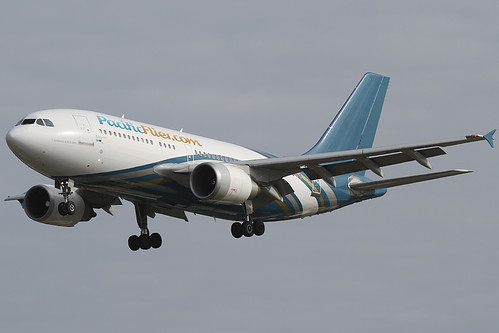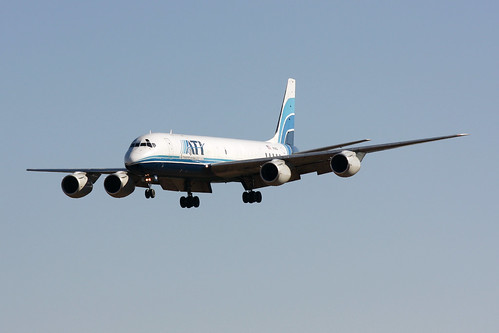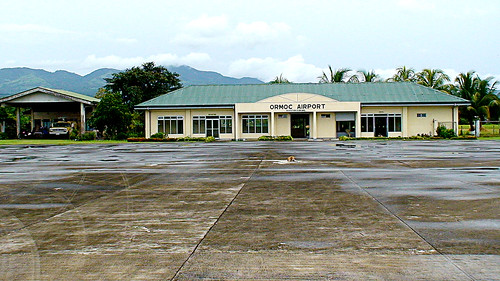PAL management says move necessary due to global crisisMANILA, Philippines - A resigned pilot of Philippine Airlines (PAL) revealed on Wednesday that he and several of his colleagues quit their jobs after the country's flag carrier declared them redundant and decided to transfer them to its low-cost unit, with lower salary and zero benefits.
The management of PAL, meanwhile, defended the move, saying it was just temporary as the ailing airline had to cope with the global crisis.
Resigned PAL pilot, First Officer
Henry Claveria, told ANC's Headstart that management asked them to sign a prepared document, declaring them redundant and transferring them to Air Philippines, the budget airline unit of PAL.
Claveria said they were told that those who would refuse to sign would be compensated, but would not be allowed to use their flying skills for another airline.
He said rumors about the transfer surfaced as early as last year, but it was denied by the management.
However, come February, 11 contractual captains, all aged 60 above, were given notice that their contracts had ended and they could transfer to Air Philippines.
"Nagkatotoo na nga ang balita na maglilipat," Claveria said.
After that, 7 regular first officers were also called in and given the same offer.
Claveria declined the offer because his usual P120,000 take home pay would be slashed by P30,000 and his benefits, including medical insurance for his family, would be written off.
Claveria and 24 others who were affected by the redundancy issue filed for resignations. Some of the pilots had taken jobs at international airlines.
The resignations had forced the cancellation of 18 PAL flights over the weekend, and 4 domestic flights on Monday.
Not just about moneyAside from lower pay and instability, the pilots walked out because they did not like how the management of PAL treated them.
Claveria said all PAL pilots have faithfully served the airline, thumbing down bigger offers by overseas carriers in the past.
“Hindi naman puro pera lang ito. Actually, hindi ito pera,” he said.
Claveria said if PAL had been more open about its plans, he and the other pilots would have stayed despite the salary cut.
Temporary response to crisisPAL management, for its part, defended its move to transfer some of its pilots to its low-cost domestic flight operations.
PAL President and Chief Operating Officer Jaime Bautista said the airline had to respond to the crisis in the global airline industry in 2008 and 2009, as well as address the growing competition from local airlines that offer cheaper air fares like Cebu Pacific.
"Mas malaki ang growth sa low cost market kumpara sa mga legacy airlines which offer more amenities. Mas maraming pasahero ang gustong lumipad ng mas mura kahit na medyo nahihirapan sila. Para naman makakuha kami ng magandang share sa low cost airline industry, nag decide ang management na i-convert ang dalawang eroplano into low cost operation," Bautista said in a phone interview with DZMM on Wednesday.
While PAL was facing stiff competition from the likes of Cebu Pacific in the domestic routes, the global economic downturn also led to reduced long-haul flights for most legacy carriers, and PAL was left with "excess" pilots.
"We had in February some pilots that we considered excess. We told them that for the meantime that the industry has not yet recovered, we can assign you to Air Philippines. But the moment the industry recovers, we will assign you back to PAL. This June, the industry started to recover, we put them back on PAL, these are just a few officers, and their salaries are the same," Bautista said.
He said that PAL management would not force the pilots who resigned to come back, but only wants to recover the costs in training them. He added the pilots should comply with their contracts, which include a 6-month notice if they plan to resign.
"We cannot force them if they don't want to come back, but they have to follow the terms of their contracts. In due time, we will get replacements, we had a similar problem in 2006 when we experienced an exodus of our pilots, but they have to give us proper notice because their skills are critical."
Bautista said there was also no issue about the pilots' retirement package.
"As a result of the 2006 crisis that we had, we made an agreement to further enhance or make their package attractive by doubling their retirement pay if they reach the mandatory retirement age of 60."
Operations back to normal
Bautista said that despite the unresolved issues, PAL's operations are back to normal. It only has to reduce its domestic flights, but its international operations have not been affected.
The airline is beset with other problems as its flight attendants and stewards are also threatening to strike to protest the mandatory retirement age of 40, while other employees, about 3,000, are also contesting PAL's plan to outsource its key operations.
The airline, Bautista said, suffered a loss of $1.4 billion in 2009, and has outstanding debts of about $1 billion. --
ABS-CBNNEWS
 Laoag - Hongkong Express, an airline based in Hong Kong has announced indefinite suspension of twice weekly flights between Hongkong and Laoag after the Hong Kong government issued a travel ban to the country Tuesday as a direct consequence of hostage killings in Manila.
Laoag - Hongkong Express, an airline based in Hong Kong has announced indefinite suspension of twice weekly flights between Hongkong and Laoag after the Hong Kong government issued a travel ban to the country Tuesday as a direct consequence of hostage killings in Manila.


















